If you want to know about the site planning and development for disabled person or wheelchair user accessible toilet design or disabled parking space, please click the link.
When designing a building, it is important to consider the needs and requirements of disabled persons in order to ensure that they can access and use the building independently and safely.
- These requirements deal with barrier free access to, movement within and around buildings, by the elderly persons and persons with disabilities who may have non-ambulatory disabilities, ambulatory disabilities, sight disabilities, hearing disabilities, disabilities of in co-ordination, ageing, allergies, heart and lung diseases, epilepsy, haemophilia, incontinence, enterostomy, etc.
- It is intended to make all buildings and facilities used by the public accessible to, and usable by all people including those living with disabilities and may include those with inability to walk or difficulty in walking, reliance on walking/mobility aids, blindness and visual impairments, speech and hearing impairments, in-coordination of motor movements, reaching and manipulation, lack of stamina, difficulty in interpretation and reacting to sensory information and extremes in physical sizes.
- These requirements apply to all buildings and facilities open to and used by the public.
- These shall also apply to all forms of public housing by the government/civic bodies or private developers.
- It does not apply to private residences.
1) Definitions apply for disabled persons
Ability
- Identifiable human attribute, including but not exclusively, to walk, to speak, to hear, to see, to feel by touch, to taste, to understand, and to recognize.
Access Aisle
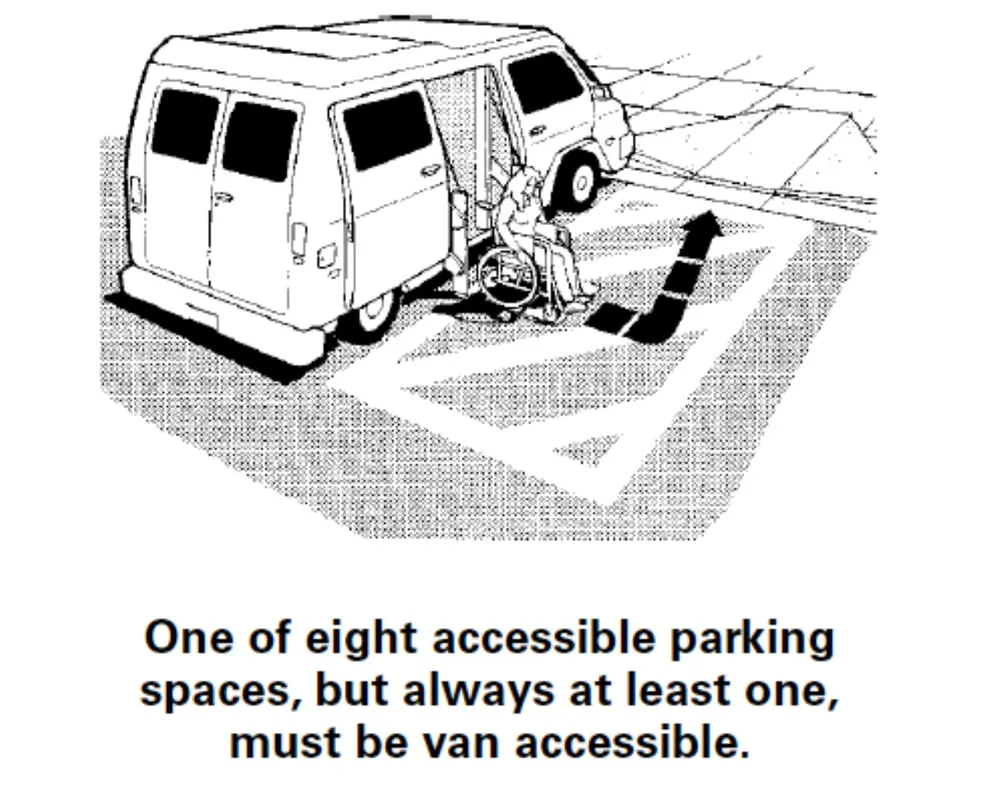
- An accessible pedestrian space between elements, such as parking spaces, seating and desks, that provides clearances appropriate for use of the elements.
Accessible Site, Building, Facility or Portions
- A site, building, facility, or portions thereof that complies with the requirements given in this clause to which people, regardless of their disability, age or gender are able to gain access to, into them, to use them and exit from them with dignity.
Note – Accessibility includes ease of independent approach, entry, evacuation and/or use of a building and its services and facilities, by all of the building’s potential users with an assurance of individual health, safety and welfare during the course of those activities.
Accessible Route
- A continuous unobstructed path connecting all accessible elements and spaces in a building or facility that may be negotiated by a person with disabilitiy using a wheelchair and that is also safe for and usable by persons with other disabilities.
- Interior accessible routes may include corridors, ramps, elevators, lifts, and clear floor space at fixtures.
- Exterior accessible routes may include parking, access aisles, kerb ramps, walkways, pathways, footpaths/sidewalks, and ramps.
Accessible Toilet
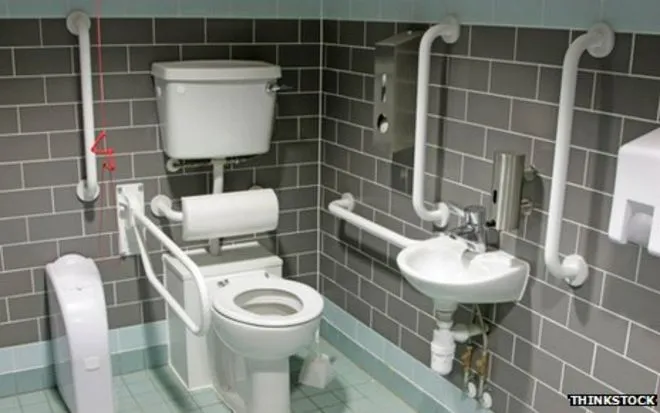
- A compartment having the basic requirements of minimum clear spaces, water-closet, washbasin and other essential washroom accessories as required by people with non-ambulatory disabilities.
- There are also toilets for ambulant disabled which provide accessibility for convenient use by persons with ambulatory disabilities.
Ageing
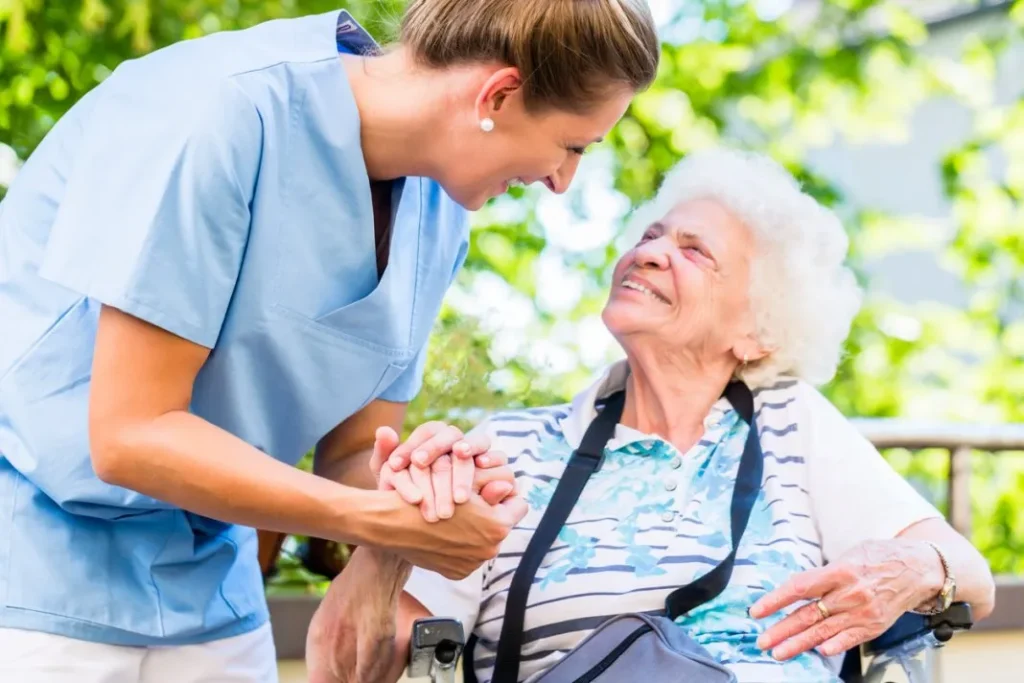
- Those manifestations of the ageing processes that significantly reduce mobility, flexibility, coordination, and perceptiveness but are not accounted for in disability categories mentioned elsewhere in this Part.
Area of Rescue Assistance

- Building space directly adjoining, and visible from, a main vertical evacuation route, robustly and reliably protected from heat, smoke and flame during and after a fire, where people can temporarily wait with confidence for further information, instructions, and/or rescue assistance, without obstructing or interfering with the evacuation travel of other building users
Note – Robust- means structurally hardened and resistant to mechanical damage during the fire and for a period of time afterwards, that is, the cooling phase.
Assistive Product/Device

- Product/device especially produced or generally available, for preventing, compensating for, monitoring, relieving or neutralizing impairments, activity limitations and participation restrictions.
Assisted Evacuation

- Strategy that exists during which a designated person or persons provide assistance, during an emergency, to another person to leave a building or a specific part of the built environment and to reach a final place of safety.
Automatic Door

- A door equipped with a power operated mechanism and controls that open and close the door automatically upon receipt of a momentary signal.
- The switch that begins the automatic cycle may be photoelectrical device, floor mat, sensing device, or manual switch mounted on or near the door itself.
Circulation Path

- An exterior or interior way of passage from one place to another for pedestrians, including walkways, pathways, hallways, courtyards, stairways and stair landings.
Circulation Space
- Unobstructed space necessary for access to, into and within and egress from any part of the built environment.
Clear
- Unobstructed.
Colour Contrast
- The difference in colour that makes an object (or its representation in an image or display) distinguishable.
- It is determined by the difference in the colour of the object and other objects within the same field of view.
- Distinguishing one form/object from another by hue is the most basic and easily understood contrast.
Note
- The basic guidelines for making effective colour choices are based on the hue value of the colours.
- The most commonly used methods of achieving colour contrast incorporate either harmonizing or contrasting colour combinations.
- Contrast of hue is what relates most directly to the colour wheel combinations.
- The further away from each other two colours are, the higher the contrast.
- This means that the complementary colour combination has the highest contrast, while the analogous combination has the lowest.
Disability
- An umbrella term for impairments, activity limitations, and participation restrictions, denoting the negative aspects of the interaction between an individual (with a health condition) and that individual’s contextual factors (environmental and personal factors).
- Disability is neither simply a biological nor a social phenomenon but arises from the relationship between health condition and context.
Grab Bars
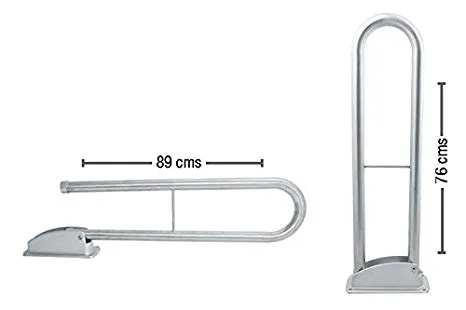
- A bar used to give a steadying or stabilizing assistance to a person engaged in a particular function.
Handrails

- A rail used in circulation areas such as corridors, passageways, ramps and stairways to assist in continuous movement.
Hue
- Attribute of visual sensation which has given rise to colour names, such as, blue, green, yellow, red and purple.
Note
- People with normal colour vision report that hues follow a natural sequence based on their similarity to one another.
- With most colour deficits, the ability to discriminate between colours on the basis of hue is diminished.
Impairment
- Limitation in body function or structure such as a significant deviation or loss which can be temporary due, for example to injury, or permanent, slight or severe and can fluctuate over time, in particular, deterioration due to ageing.
Note – Body function can be a physiological or psychological function of a body system; body structure refers to an anatomic part of the body such as organs, limbs and their components.
International symbol of accessibility
- The symbol consisting of a square overlaid with a stylized image of a person using a wheelchair see Graphical Symbols (please click this link) and figure below.
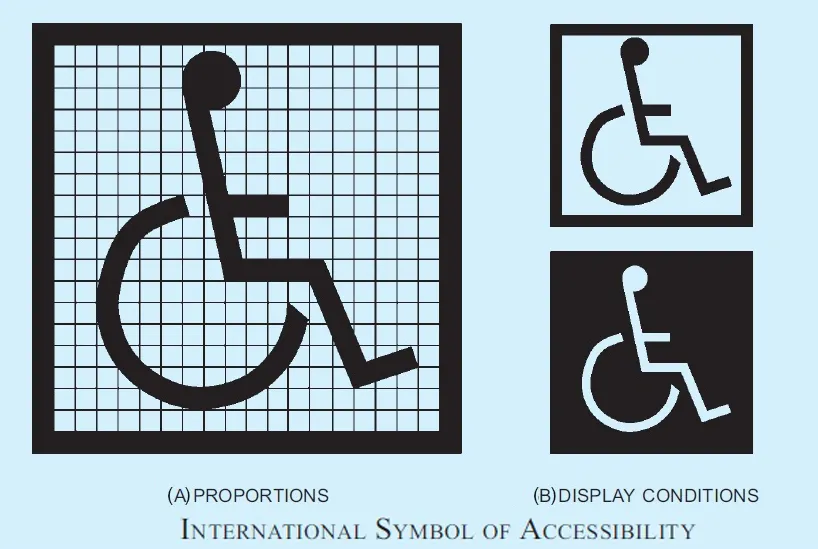
Note
- The symbol is often provided where access has been improved, particularly for wheelchair users and other mobility impaired persons.
- The symbol denotes a barrier free environment, to help older people, parents with prams and travellers with luggage besides persons with disabilities.
- The wheelchair symbol is always facing to the right.
Kerb
- A side barrier to a trafficable surface or the edge where a raised sidewalk/footpath, road median, or road shoulder meets an unraised street or other roadway.
Kerb Ramp
- A short ramp cutting through a kerb or built up to it.
Knurled Surface
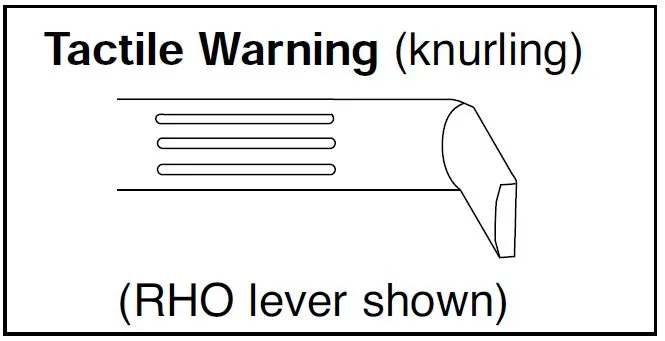
- Roughened area, often in a crisscross pattern; used on grab bars to improve grasp and to prevent slipping.
Landing
- A platform or part of a floor structure at the end of a flight of stairs or a ramp or at the entrance to a lift car.
Light Reflectance Value (LRV)
- The total quantity of visible light reflected by a surface at all wavelengths and directions when illuminated by a light source.
Manoeuvring Zone
- The minimum three dimensional space within which it is feasible to complete a manoeuvre needed to gain access to a specific facility, component or fitting, in particular while using a wheelchair or a walking aid.
Ramp
- The construction, in the form of an inclined plane that is steeper than or equal to 1:20 (5 percent) from the horizontal, together with any intermediate landing, that makes it possible to pass from one level to another see Ramps ( Please click this link ).
Operable Parts

- A part of a piece of equipment or appliance used to insert or withdraw objects, or to activate, deactivate, or adjust the equipment or appliance (for example coin slot, push button, handle, etc).
Persons with Disabilities
- A person with any physical, mental, intellectual or sensory impairment which in interaction with various barriers may hinder full and effective participation in society on an equal basis with others.
Space
- A definable area (for example toilet room, hall, assembly area, entrance, storage, room alcove, courtyard, or lobby).
Tactile

- That relating to perception using the sense of touch.
Note
- It relates to information and interpretations derived from the sense of touch.
- This involves sensory transfer through physical contact of the hands or feet with other surfaces, as well as sensory transfers received by contact with non-physical elements such as pressure, wind and temperature.
Tactile ground surface indicators

- Indicators profiled paving surface with visual contrast criteria to enable a person with impaired sight using a long cane, underfoot or visual identification to detect a specific route (guiding pattern) or the presence of a hazard (attention pattern).
- These are also called tactile tiles or tactile walking surface indicators.
Note
- These indicators which provide a distinctive surface pattern of strips and truncated domes or cones (small domes or cones that have had their tops cut off,or truncated) are used to guide/alert persons with vision impairments of their approach to facilities, streets and hazardous drop-offs.
- People who are blind or visually impaired are alerted of impending danger from vehicle impact or a grade change.
Tactile Guiding Blocks
- Tiles of size 300 mm × 300 mm that incorporate flat topped bars 5 mm (± 0.5 mm) high, 20 mm wide and spaced 50 mm from the centre of one bar to the centre of the next and are easily detectable underfoot by persons with visual impairments.
- They are used externally to guide people with visual impairments along the circulation path.
- They may also be used internally in large busy areas such as railway stations and airports.
Tactile Warning Blocks
- Tiles of size 300 mm × 300 mm that incorporate rows of 5 mm (± 0.5 mm) high flat topped blister like domes that are easily detectable underfoot by persons with visual impairments, recognized as a sign of approaching hazards.
- These are placed along the approach path to unavoidable obstacles and hazards to warn persons with visual impairments of the approaching danger or level change.
Tactile Signs
- Tactile signage incorporates raised text or symbols to enable touch reading by people who are blind, and touch enhancement of visual perception for people who are vision impaired.
Unobstructed Width
- Free unobstructed space necessary for passage through a doorway, along a passageway, or other route element (for example stairway).
Unobstructed Width, Door
- Available width for passage through a door opening, clear of all obstructions, measured when the door is opened 90°, or when a sliding or folding door is opened to its fullest extent
Unisex Accessible Toilet
- Accessible toilets that can be used by both sexes.
Note – Unisex accessible toilets allow the greatest flexibility for people who require assistance.
Universal Design
- The design of products and environments to be usable by all people, to the greatest extent possible, without the need for adaptation or specialized design.
Visual Contrast
- Visual perception between one element of a building and another.
- This can be produced by a difference in light reflectance value (LRV) or luminance, also called luminance contrast.
Note
- Light reflectance value is measured on a scale of 0 to 100 where 0 equals black meaning total light absorption and 100 equals white meaning total light reflection.
- A simple formula for visual contrast is given below for guidance: Visual contrast = [(B1xB2)/B1] × 100, in percent
where
B1 = LRV of the lighter area; and B2 = LRV of the darker area.
- In most circumstances, a difference in these values of 30 percent is considered adequate.
- However, research suggests that signs are more legible for the visually impaired when characters contrast with their background by at least 70 percent.
Walks (Walkways)
- A predetermined prepared surface, exterior pathway leading to or from a building or facility, or from one exterior area to another, placed on the existing ground level and not deviating from the level of the existing ground immediately adjacent.
Way Finding

- Descriptive of a system whereby appropriate information is provided to assist a person to pass through the built environment towards a specific destination.
Note
- Way finding includes orienting oneself, knowing one’s destination, following the best route, recognizing one’s destination and finding one’s way back out.
- People who are blind or who have a vision impairment benefit from tactile information to facilitate way finding.
Wheelchair User
- A person who relies on a wheelchair for mobility.
Water-Closet Compartment/Toilet Cubicle
- A compartment having a water-closet with grab bars installed to assist persons with physical disabilities/ mobility impairments.
White Cane
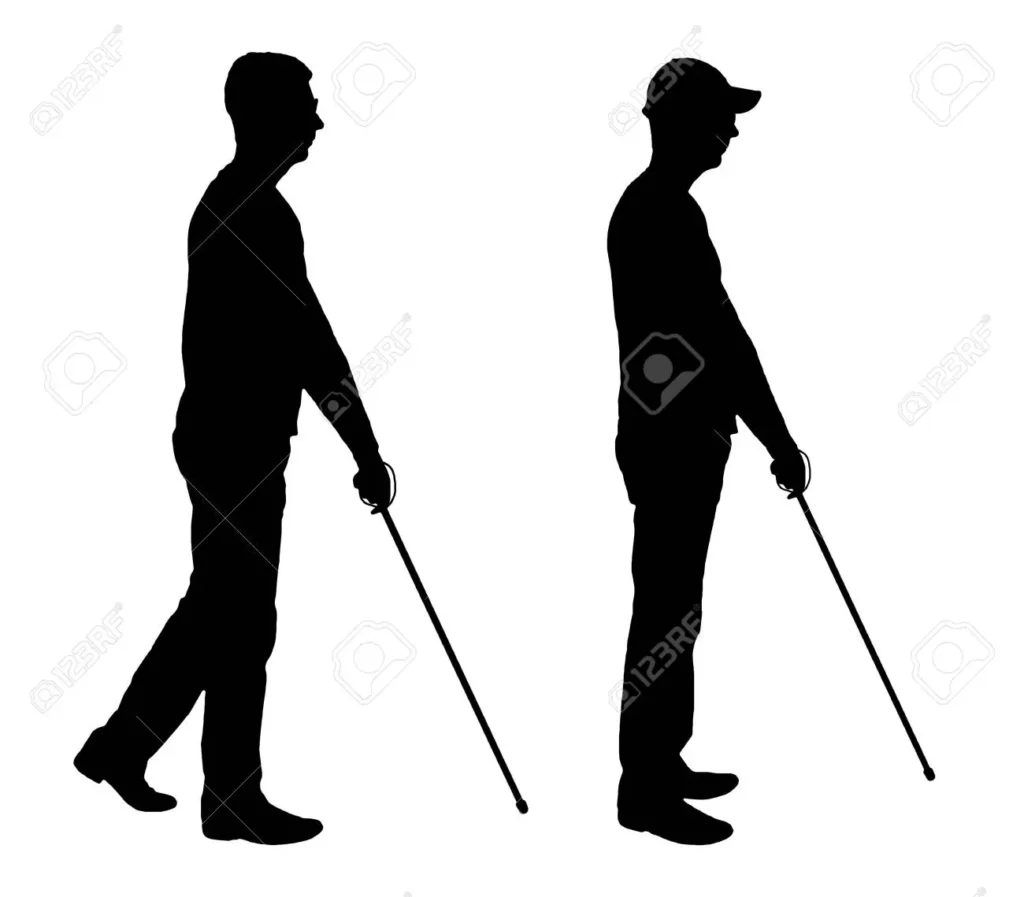
- A long rod-like device used by blind or visually impaired travellers to give them information about the environment they are travelling through.
Overall, the aim is to create a barrier-free and inclusive environment that accommodates the needs of all individuals, regardless of their abilities.